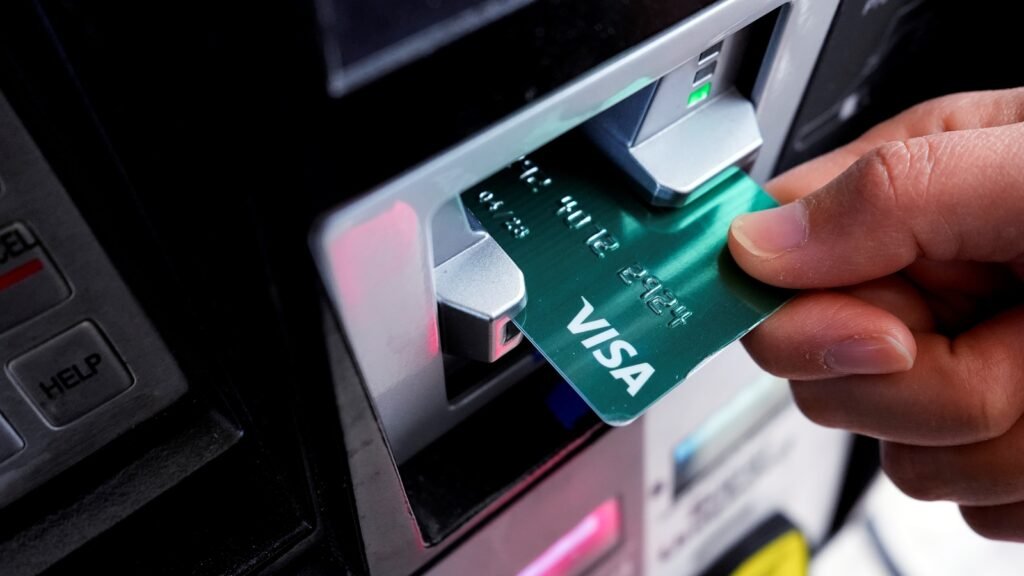The Federal Reserve is lastly decreasing charges | Here is what customers ought to know

The Federal Reserve has reduce its benchmark rate of interest from its 23-year excessive, with penalties for debt, financial savings, auto loans, mortgages and different types of borrowing by customers and companies.
On Wednesday, the Fed introduced that it lowered its key charge by an unusually giant half-percentage level, to between 4.75 and 5 p.c, the first charge reduce in additional than 4 years.
The central financial institution is appearing as a result of, after imposing 11 charge hikes relationship again to March 2022, it feels assured that inflation is lastly gentle sufficient that it could actually start to ease the price of borrowing. On the similar time, the Fed has grown extra involved concerning the well being of the job market. Decrease charges would assist help the tempo of hiring and hold unemployment down.
“Latest indicators recommend that financial exercise has continued to increase at a strong tempo,” the Fed mentioned in a press release. “Job positive factors have slowed, and the unemployment charge has moved up however stays low. Inflation has made additional progress.”
Extra Fed charge cuts are anticipated within the coming months, with the steepness of the reductions depending on the route of inflation and job progress.
“We all know that it’s time to recalibrate our (rate of interest) coverage to one thing that is extra applicable given the progress on inflation,” Fed Chair Jerome Powell mentioned at a information convention. “The labor market is definitely in strong situation and our intention with our coverage transfer at this time is to maintain it there.”
“We do not suppose we’re behind – we predict that is well timed,” he added. “However I feel you’ll be able to take this as an indication of our dedication to not get behind.”
What do the Fed’s charge cuts imply for savers?
Though taking motion now to attempt to capitalize on decrease charges, like shifting cash out of a certificates of deposit or refinancing a mortgage, “may be warranted for some, you should not really feel obligated to utterly change up your monetary technique simply because charges transfer decrease,” mentioned Jacob Channel, a senior economist at LendingTree.
“Act cautiously and responsibly,” Channel mentioned, “and do not make any rash selections primarily based on a single Fed assembly or financial report.”
Ultimately, yields for savers will decline because the Fed lowers its benchmark charge.
“As engaging as yields on financial savings devices have not too long ago been, it is sensible to not maintain an excessive amount of in money as a result of these are short-term devices and their yields are ephemeral,” mentioned Christine Benz, director of private finance at Morningstar. “The actually nice yields that we have had not too long ago might go decrease.”
If you do not have a necessity for money instantly, you’ll be able to proceed to lock in what are “nonetheless fairly respectable yields on supply,” she mentioned. In that case, “longer-term certificates of deposit would possibly make sense.”
“Decrease rates of interest make it tougher to maximise financial savings and protect the capital constructed whereas rates of interest have been greater,” mentioned Matt Brannon, a private finance knowledgeable at MarketWatch guides. “A simple short-term transfer to guard your financial savings is to shift your funds right into a high-yield financial savings account, which presents greater rates of interest than conventional financial savings accounts… All these financial savings accounts will nonetheless enable you to to protect capital because of comparatively greater rates of interest.”
How will the speed cuts have an effect on bank card debt and different borrowing?
“Whereas decrease charges are definitely a superb factor for these scuffling with debt, the reality is that this one charge reduce is not actually going to make a lot of a distinction for most individuals,” mentioned Matt Schulz, a credit score analyst at LendingTree.
That mentioned, the Fed’s declining benchmark charge will ultimately imply higher charges for debtors, lots of whom are going through a few of the highest bank card rates of interest in many years. The common rate of interest is 23.18% for brand spanking new presents and 21.51% for current accounts, in line with WalletHub’s August Credit score Card Panorama Report.
Nonetheless, “one of the best factor folks can do to decrease rates of interest is to take issues into their very own arms,” Schulz mentioned. “Consolidating your money owed with a 0% stability switch bank card or a low-interest private mortgage can have a far greater influence in your debt load than most something the Fed will do.”
How about mortgages?
The Fed’s benchmark charge would not immediately set or correspond to mortgage charges. Nevertheless it does have a significant oblique affect, and the 2 “have a tendency to maneuver in the identical route,” mentioned LendingTree’s Channel.
To wit, mortgage charges have already declined forward of the Fed’s predicted reduce.
“It goes to indicate that even when the Fed is not doing something and simply holding regular, mortgage charges can nonetheless transfer,” he mentioned.
Channel mentioned that almost all of People have mortgages at 5%, so charges might must fall additional than their present common of 6.46% earlier than many individuals take into account refinancing.
And automotive loans?
“With auto loans, it is excellent news that charges might be falling, nevertheless it would not change the fundamental blocking and tackling of issues, which is that it is nonetheless actually necessary to buy round and never simply settle for the speed {that a} automotive seller would give you on the dealership,” mentioned Greg McBride, an analyst at Bankrate. “It is also actually necessary to save lots of what you’ll be able to and be capable to attempt to put as a lot down on that automobile as you’ll be able to.”
McBride predicts that the speed cuts and the avoidance of a recession will result in decrease auto mortgage charges, not less than for debtors with sturdy credit score profiles. For these with decrease credit score profiles, double digit charges will possible persist for the rest of the yr.
Robert Frick, company economist for Navy Federal Credit score Union, mentioned that whereas he thinks a charge reduce will work its method into auto loans, it in all probability will not occur instantly and folks with greater credit score scores will possible profit first.
Loans for brand spanking new automobiles proper now are averaging 7.1%, with used automobile loans at a a lot greater 11.3%, in line with Edmunds.com.
These charges, coupled with still-high costs, have despatched many doable patrons to the sidelines ready for charges to drop. Partly because of this, U.S. new automobile gross sales rose solely a sluggish 2.4% by means of June.
Excessive costs and charges have additionally led to extra delinquent funds and defaults on auto loans, particularly amongst folks with decrease credit score scores. Consequently, Frick mentioned, many lenders will in all probability attempt to hold charges excessive to cowl potential losses.
“Charges might be coming down, however we should not anticipate them to return down rapidly general,” he mentioned.
Frick suggests ready for extra Fed charge cuts to return by means of if doable, particularly in case you’re shopping for a used automobile.
Jeff Schuster, vice chairman of automotive analysis for International Information, mentioned he doubts that modest charge cuts by the Fed might be sufficient to attract many patrons off the sidelines, until automakers supply their very own low-interest loans and different reductions.
“I feel it will take a pair extra cuts earlier than we get any substantial reduction for these customers,” he mentioned.
What is going on on with inflation and the job market?
Client costs rose 2.5% in August from a yr earlier, down from 2.9% in July – the fifth straight annual drop and the smallest since February 2021.
Hiring picked up a bit in August, and the unemployment charge dipped for the primary time since March. Employers added 142,000 jobs, up from 89,000 in July. The unemployment charge declined to 4.2% from 4.3%, which had been the very best stage in almost three years.
These indicators point out that the job market, although cooling, stays sturdy.
The speed at which the Fed continues to chop charges after September will rely partly on what occurs subsequent with inflation and the job market, within the coming weeks and months.
Copyright © 2024 by The Related Press. All Rights Reserved.





